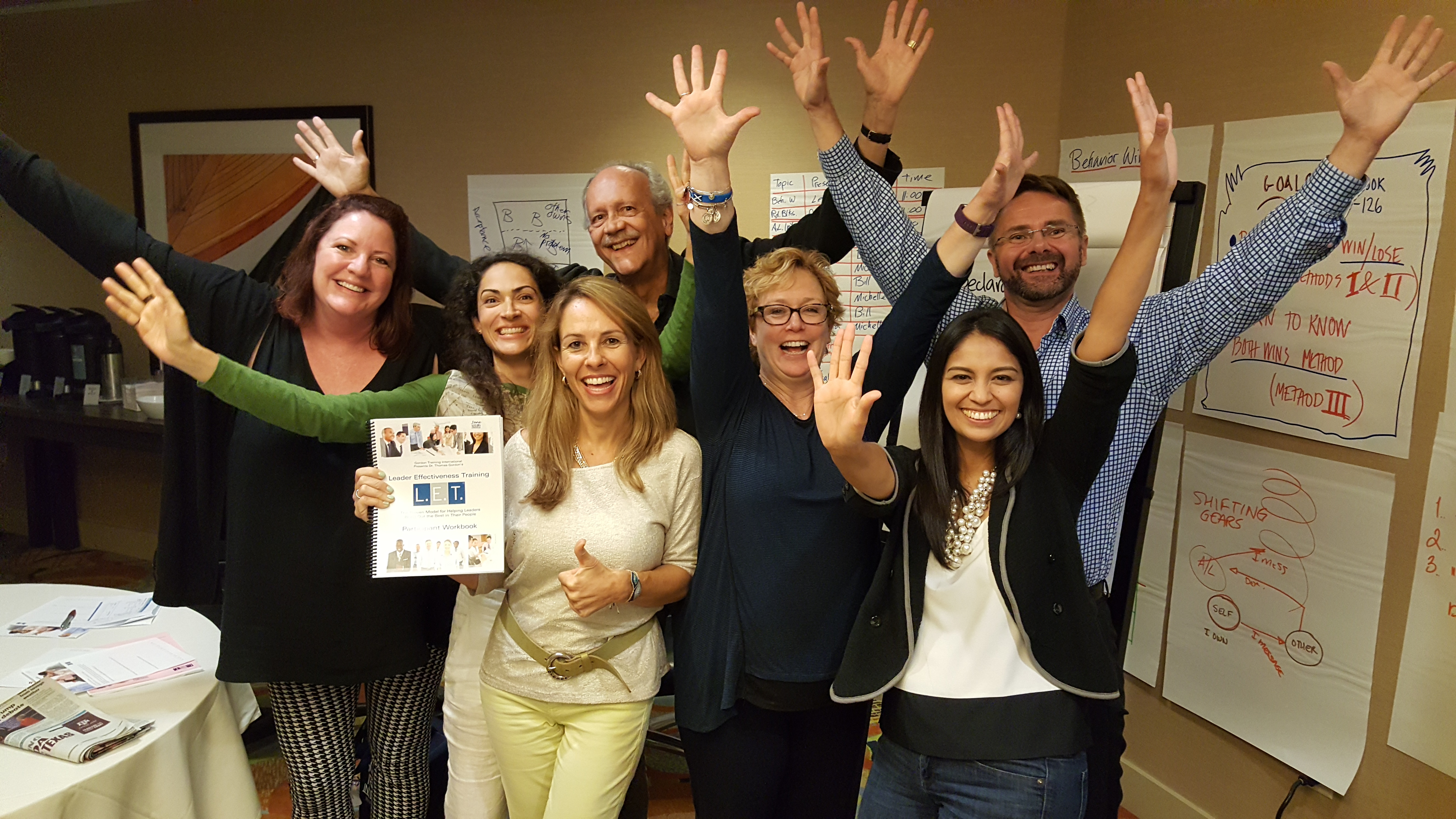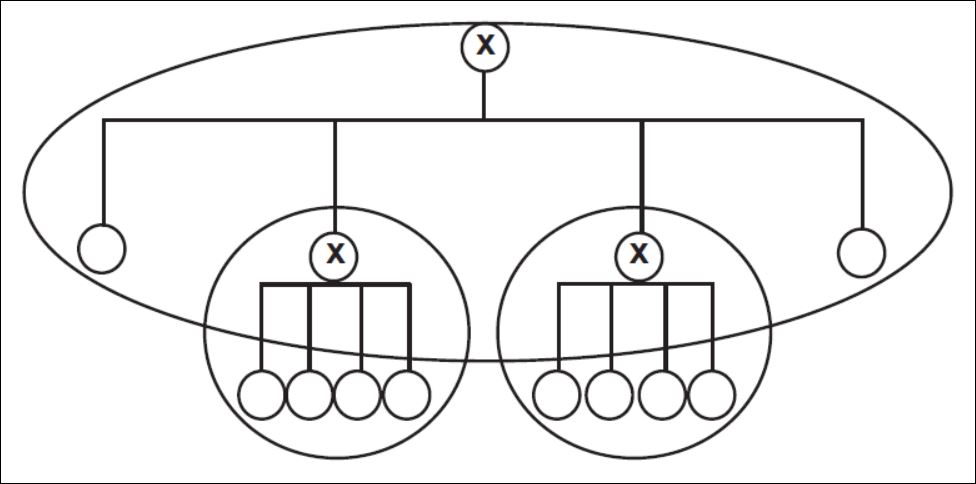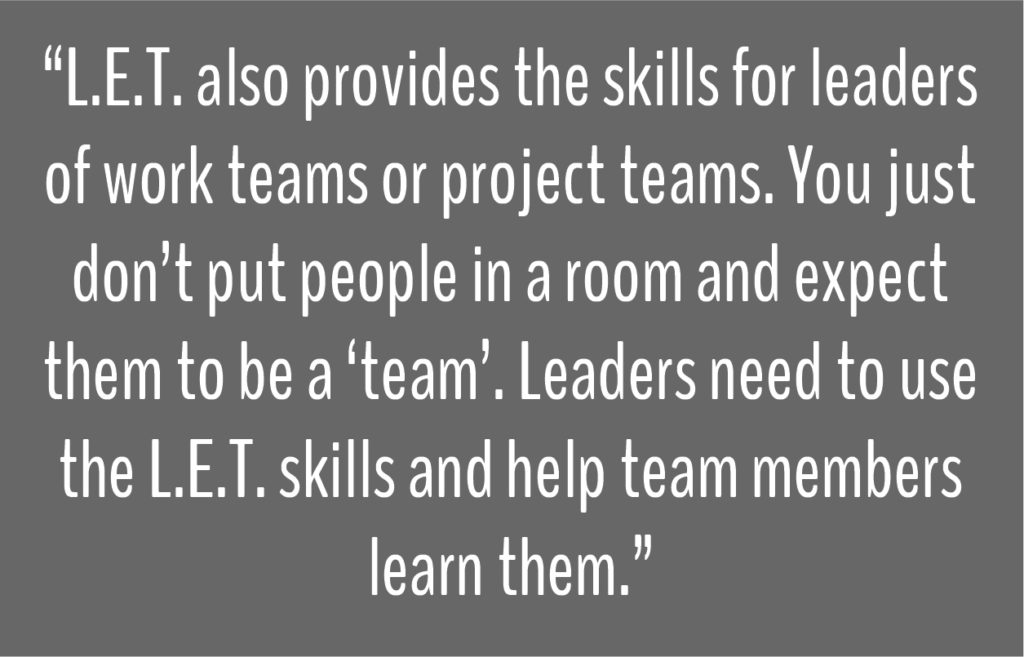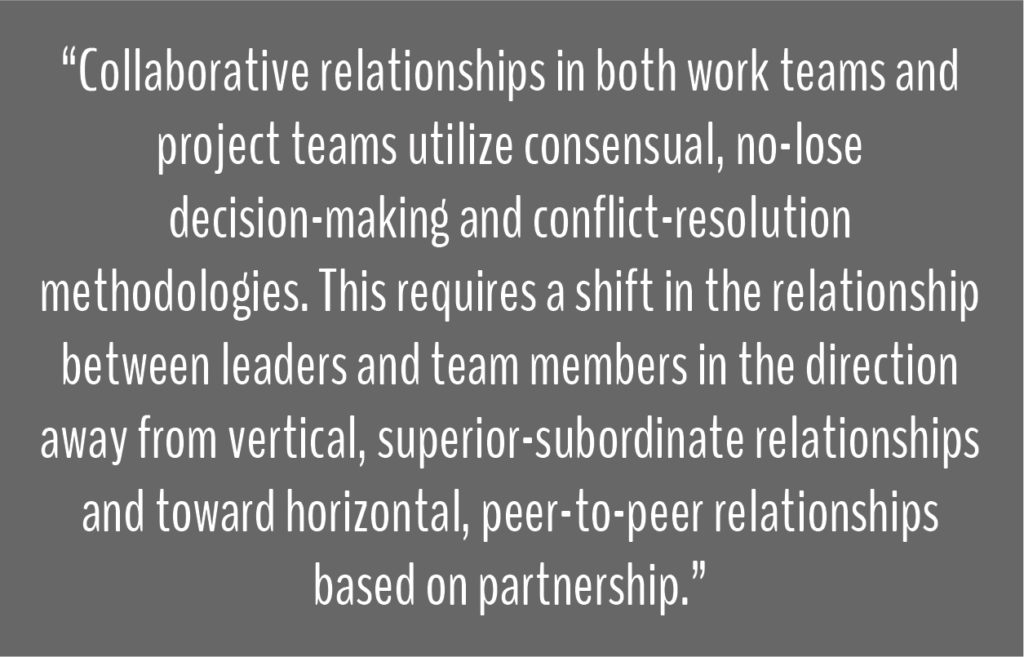
The L.E.T. Workshop is based upon the assumption that organizations need a new kind of leadership that puts human values first—a model of leadership that facilitates each person’s creative capacities, the free expression of their individuality and their active participation in problem-solving and goal-setting.
The traditional model of leadership, based upon control by power, restrains individuals from releasing all of the creativity and constructive capabilities they possess.
L.E.T. presents a different model of leadership, which is often defined by a variety of terms such as:
- partnership
- collaborative
- participative
- group-centered
- democratic
Throughout the workshop we sometimes will use the term “L.E.T. Model” to convey that the course teaches a set of communication skills that are necessary to build and maintain collaborative relationships.
Although L.E.T. stands for Leader Effectiveness Training, it is more than a course to teach leadership skills. It is also a course that will teach you the skills for building and enriching any and all of your relationships—such as relationships with:
- Other leaders in your organization
- Customers
- Your manager or supervisor
- Suppliers
- Co-workers
- Employees
- Spouses
- Partners
- Children
- Your parents
- Friends
- Relatives
The truth of this derives from the fact that L.E.T. teaches a universal model for building effective relationships. This means that the model can be used and practiced whenever and wherever you are relating to other people.
The skills learned in L.E.T. become an integral part of you as a person. You find new ways to get your needs met to replace using power. You become more accepting of the inevitability of conflicts in your relationships and more confident in your ability to resolve such conflicts so nobody loses and feels angry and deprived.
You most certainly can become more assertive and less aggressive in disclosing your ideas and feelings. You may even find you get angry less frequently and are more capable of defusing your anger.
We use the word “leader” because it is a term that is appropriate for a manager, a department head, a supervisor or an administrator. One can also be the leader of a work team or a project team.
Our definition of a “leader” implies the existence of some kind of a group that has “group members” and an assigned group leader. In most organizations leaders are also members of another group, as in the typical organizational chart.
WHAT WE MEAN BY THE TERM “LEADER”
In the diagram to the right every member ( ) belongs to a group, but two members belong to two groups—in one group as a member ( ) and in a lower group as a leader (x):
It is clear from the above that leaders not only need the essential skills for building good relationships with the members of their own group but they also need skills for relating to the leader and the members of another group. L.E.T. provides the essential skills for all these relationships.
I developed L.E.T. in the early 1950’s when I began consulting with organizations. My first book, Group-Centered Leadership, which was published in 1955, defined a new pattern of leadership that contained many, but not all, of the components and skills you will find in this present-day version of the L.E.T. course. The book’s participative management ideas were radical for the times and survived only one printing of a few thousand copies.
THE HISTORY OF L.E.T.
Because I wanted to bring this model of leadership out of the privacy of university laboratories into the public domain, I further developed and then began teaching the L.E.T. course in the late 1960’s. My second book on leadership was first published in 1977 and given the same name as the L.E.T. course.
Today the L.E.T. Model is also being taught in other Gordon Training International training programs—for teachers and parents with the same essential components:
- The Behavior Window
- Problem Ownership
- Active Listening
- I-Messages
- No-Lose Conflict Resolution
- Values Collision Options
The L.E.T. Workshop has been taught in thousands of organizations in the U.S. and other countries. Among those organizations are such well-known and successful companies as Amazon, XPO Logistics, W.L. Gore, PCL Construction, W.L. Gore & Associates, YMCA to name just a few.

THE PARTICIPATIVE MODEL
The move toward participation as the most effective form of leadership in organizations is gaining acceptance not only in the United States but throughout the world. Evidence is accumulating for its superiority over authoritarian systems of governance. Companies that involve people in activities traditionally limited to managers are more productive and financially successful than companies that don’t.
Many studies show that participative work practices positively affect absenteeism, turnover, productivity and morale. People feel better about themselves, have more self-esteem, have gained more control over their lives and lost some of their feelings of powerlessness (McLagan, P. and Christo, N., 1995; Simmons, J. and Mares, W., 1983).
Participative governance requires a new kind of leadership that builds and maintains relationships which are more like partnerships than traditional relationships in which leaders dominate and workers are subordinate.
The most valid indicators of participative governance are the ways in which people interact with each other in their relationships. In collaborative relationships, people are encouraged to take their problems and their new ideas to those who can help them solve them. People empower each other. Suppliers and customers are treated like partners.
In these relationships, people attend meetings when they have information to share or something of value to contribute— there are no psychological walls. And the right to participate requires everyone to learn and have the right to question or reject decisions. Everyone has the right to express his or her own needs.
Team leaders are coordinators operating with team members as peers. Leaders sometimes function as group members, and members are encouraged to carry out many of the typical leadership functions.
This change in leadership from an authoritarian model to a partnership model requires certain skills and procedures traditional leaders may not have been taught such as:
- Empathic listening
- Honest self-disclosure
- Empowering others
- No-lose conflict resolution procedure
- Consulting skills
- Group problem-solving procedure
- Facilitating effective group-centered meetings
In the L.E.T. program, you learn about these skills and are given ample opportunity to practice and be coached on the ones that are more difficult to master.


